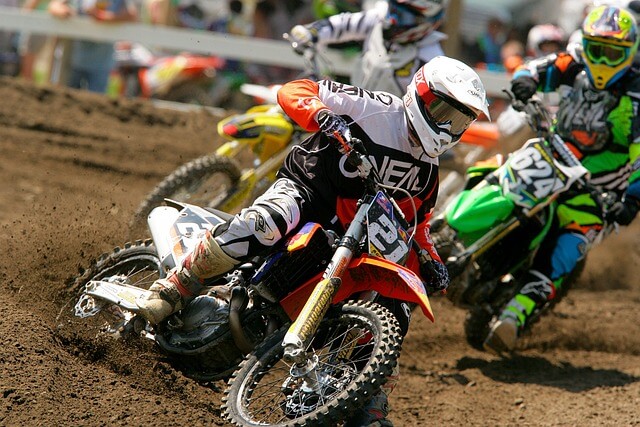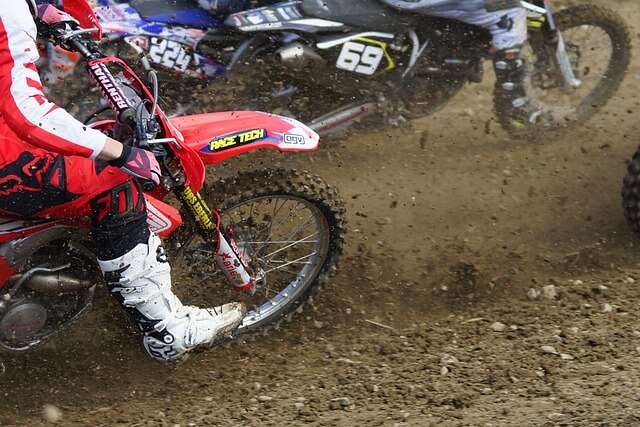
Motocross, at its highest level, combines physical exertion, mental resilience, technique, and repetition, making it one of the most challenging sports globally. The benefits of riding Motocross extend beyond the thrill of racing. A Motocross school is the first stop to experiencing these benefits.
Physical fitness:
Motocross is a demanding sport that provides an excellent full-body workout, improving strength, endurance, and cardiovascular health. Motocross is an intensely physical sport that engages nearly every muscle group in the body. Riders must maintain a strong grip on the handlebars, use their legs to absorb shocks and control the bike, and engage their core for balance and stability. The constant movement and maneuvering burns a significant amount of calories, improving cardiovascular endurance. Additionally, the strength required to control the bike helps build muscle, particularly in the arms, shoulders, legs, and core.
Mental focus and decision-making:
Riders must constantly assess terrain, make split-second decisions, and maintain concentration, which can enhance cognitive skills. Riding motocross requires intense concentration and quick thinking. Riders must constantly scan the track for obstacles, judge jumps and turns, and make split-second decisions about their line and speed. This continuous mental engagement can improve overall cognitive function, enhancing a rider’s ability to focus and make rapid decisions in other areas of life. The sport also teaches risk assessment and management skills, as riders must constantly evaluate and respond to potential hazards.
Stress relief:
The adrenaline rush and focus required can help riders forget daily stresses and improve overall mental well-being. The intense focus required in motocross can serve as a form of active meditation, allowing riders to temporarily disconnect from daily worries and stresses. The adrenaline rush experienced during riding triggers the release of endorphins, which are natural mood elevators. Many riders report feeling a sense of freedom and exhilaration while on their bikes, which can contribute to improved mental health and reduced stress levels overall. The physical exertion also helps in releasing tension and promoting better sleep, further contributing to stress reduction.
Social connections:
Motocross has a strong community aspect. Riders often practice and compete together, forming friendships based on shared interests and experiences. This social network can provide support, motivation, and a sense of belonging. Motocross events, from local practice sessions to professional races, offer opportunities to meet people from diverse backgrounds who share a common passion. These connections can extend beyond the track, leading to lasting friendships and a supportive community.
Improved motor skills:
Regular motocross riding significantly enhances a person’s motor skills. The sport demands excellent hand-eye coordination to control the bike while navigating complex terrain. Balance is crucial, especially when cornering or landing jumps, and this skill often improves dramatically with practice. Quick reaction times are essential for responding to sudden changes in terrain or avoiding obstacles. These improved motor skills can translate to other areas of life, potentially enhancing performance in other sports or daily activities that require physical coordination and quick reflexes.
A Motocross School can provide valuable preparation for riders in several ways:
1. Proper technique instruction: Experienced instructors teach correct body positioning, cornering techniques, jumping skills, and start procedures. They can help riders develop a solid foundation of proper riding mechanics, which is crucial for both performance and safety.
2. Bike control skills: Schools focus on improving throttle control, braking, clutch use, and overall bike handling. These skills are essential for navigating various terrains and obstacles effectively.
3. Safety practices: Motocross school emphasize safety protocols, including proper gear usage, track etiquette, and how to fall safely. This knowledge can significantly reduce the risk of injuries.
4. Physical conditioning: Many schools incorporate fitness training tailored to motocross demands, helping riders build the strength and endurance needed for the sport.
5. Mental preparation: Instructors often teach mental strategies for focus, managing race-day nerves, and maintaining concentration during long rides or competitions.
6. Track analysis: Schools teach riders how to read and analyze tracks, choosing optimal lines and adapting to changing conditions.
7. Bike setup and maintenance: Many programs include instruction on basic bike maintenance and how to adjust the bike for different track conditions.
8. Race strategy: For those interested in competition, schools often cover race tactics, starts, and overall strategy for different race formats.
9. Personalized feedback: Instructors can provide individualized advice based on a rider’s specific strengths and weaknesses, helping them improve more efficiently.
10. Progression planning: Schools can help riders set realistic goals and create a plan for continuous improvement in the sport.





